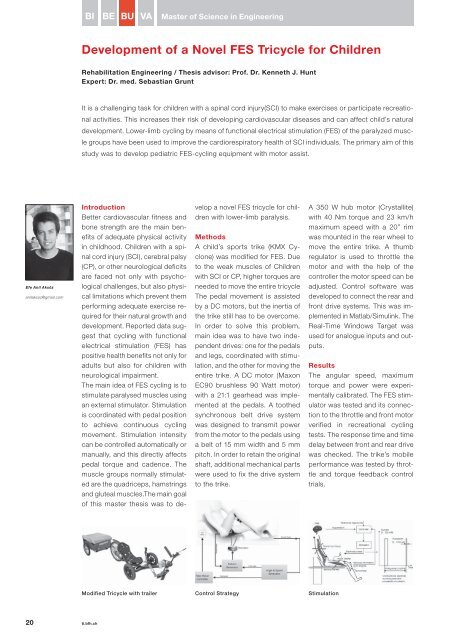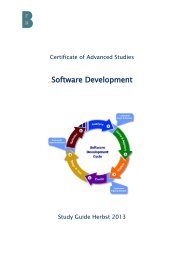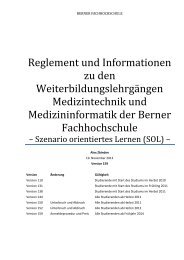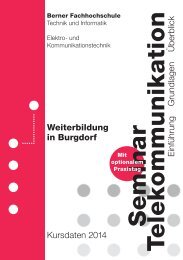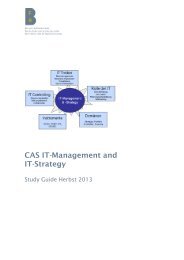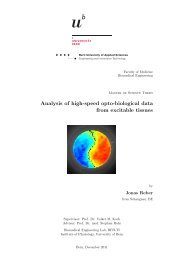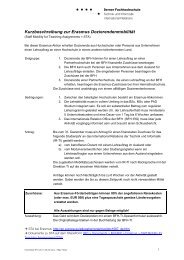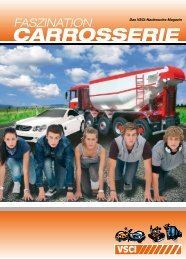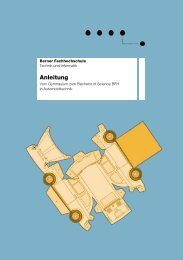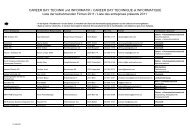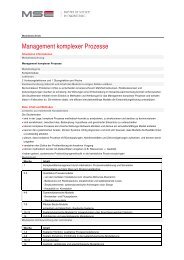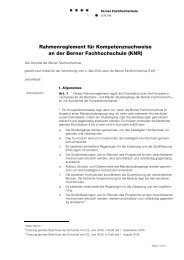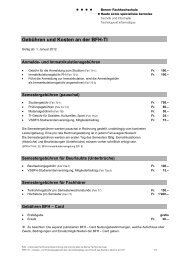Dernière édition Attention: Le pdf pèse environ 17 - BFH-TI - Berner ...
Dernière édition Attention: Le pdf pèse environ 17 - BFH-TI - Berner ...
Dernière édition Attention: Le pdf pèse environ 17 - BFH-TI - Berner ...
- Keine Tags gefunden...
Sie wollen auch ein ePaper? Erhöhen Sie die Reichweite Ihrer Titel.
YUMPU macht aus Druck-PDFs automatisch weboptimierte ePaper, die Google liebt.
BIBEBUVAMaster of Science in EngineeringDevelopment of a Novel FES Tricycle for ChildrenRehabilitation Engineering / Thesis advisor: Prof. Dr. Kenneth J. HuntExpert: Dr. med. Sebastian GruntIt is a challenging task for children with a spinal cord injury(SCI) to make exercises or participate recreationalactivities. This increases their risk of developing cardiovascular diseases and can affect child’s naturaldevelopment. Lower-limb cycling by means of functional electrical stimulation (FES) of the paralyzed musclegroups have been used to improve the cardiorespiratory health of SCI individuals. The primary aim of thisstudy was to develop pediatric FES-cycling equipment with motor assist.Efe Anil Aksözanilaksoz@gmail.comIntroductionBetter cardiovascular fitness andbone strength are the main benefitsof adequate physical activityin childhood. Children with a spinalcord injury (SCI), cerebral palsy(CP), or other neurological deficitsare faced not only with psychologicalchallenges, but also physicallimitations which prevent themperforming adequate exercise requiredfor their natural growth anddevelopment. Reported data suggestthat cycling with functionalelectrical stimulation (FES) haspositive health benefits not only foradults but also for children withneurological impairment.The main idea of FES cycling is tostimulate paralysed muscles usingan external stimulator. Stimulationis coordinated with pedal positionto achieve continuous cyclingmovement. Stimulation intensitycan be controlled automatically ormanually, and this directly affectspedal torque and cadence. Themuscle groups normally stimulatedare the quadriceps, hamstringsand gluteal muscles.The main goalof this master thesis was to developa novel FES tricycle for childrenwith lower-limb paralysis.MethodsA child’s sports trike (KMX Cyclone)was modified for FES. Dueto the weak muscles of Childrenwith SCI or CP, higher torques areneeded to move the entire tricycleThe pedal movement is assistedby a DC motors, but the inertia ofthe trike still has to be overcome.In order to solve this problem,main idea was to have two independentdrives: one for the pedalsand legs, coordinated with stimulation,and the other for moving theentire trike. A DC motor (MaxonEC90 brushless 90 Watt motor)with a 21:1 gearhead was implementedat the pedals. A toothedsynchronous belt drive systemwas designed to transmit powerfrom the motor to the pedals usinga belt of 15 mm width and 5 mmpitch. In order to retain the originalshaft, additional mechanical partswere used to fix the drive systemto the trike.A 350 W hub motor (Crystallite)with 40 Nm torque and 23 km/hmaximum speed with a 20” rimwas mounted in the rear wheel tomove the entire trike. A thumbregulator is used to throttle themotor and with the help of thecontroller the motor speed can beadjusted. Control software wasdeveloped to connect the rear andfront drive systems. This was implementedin Matlab/Simulink. TheReal-Time Windows Target wasused for analogue inputs and outputs.ResultsThe angular speed, maximumtorque and power were experimentallycalibrated. The FES stimulatorwas tested and its connectionto the throttle and front motorverified in recreational cyclingtests. The response time and timedelay between front and rear drivewas checked. The trike’s mobileperformance was tested by throttleand torque feedback controltrials.Modified Tricycle with trailerControl StrategyStimulation20 ti.bfh.ch


